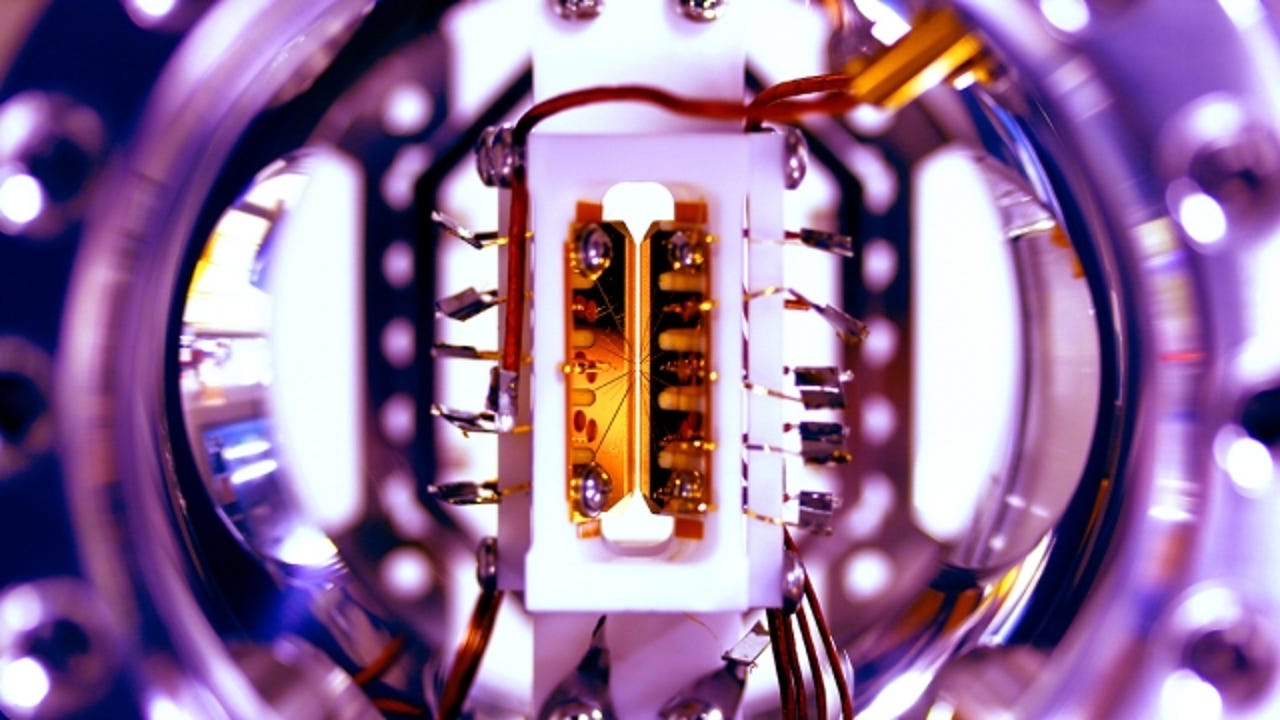Scientists crack programmable quantum computer challenge


An ion trap in close up.
Researchers have developed a small quantum computer that is capable of running multiple algorithms.
The breakthrough hinges on the ability to program quantum bits or 'qubits' with software, and paves the way for a general-purpose quantum computer rather than one that's configured to solve only one particular problem.
According to the Joint Quantum Institute at Maryland University, its researchers created a five qubit trapped ion device, which can be expanded up to 100 qubits. The device is described in a paper published in the journal Nature.
Unlike the traditional ones and zeros used by digital computers to perform calculations, qubits can be prepared in both states and hence are capable of carrying out more calculations in parallel.
So-called ion trappers have proven reliable at creating robust qubits, which are stored in the energy levels of an ion atom. The scientists were able to generate multiple algorithms by using software-controlled laser pulses to manipulate ions into various pairs. They were also able watch for the glow of each ion in order to measure the state of each qubit.
"By directly connecting any pair of qubits, we can reconfigure the system to implement any algorithm," said Shantanu Debnath, the paper's lead author. "While it's just five qubits, we know how to apply the same technique to much larger collections."
As Maryland University notes, every quantum algorithm includes qubits prepared in a particular state, which then undergo a sequence of quantum logic gates, and a final measurement process that extracts the algorithm's output.
The device uses different coloured laser light to prepare the ions and a separate laser to drive the quantum logic gates. The true engine of the device is actually a database running on a regular computer, which stores shapes that are used to control the laser pulses that drive the quantum logic gates -- the equivalent of switches and transistors -- and help build the quantum algorithms.
"By reducing an algorithm into a series of laser pulses that push on the appropriate ions, we can reconfigure the wiring between these qubits from the outside," said Debnath. "It becomes a software problem, and no other quantum computing architecture has this flexibility."
The university explains that "lasers push on the ions and couple their internal qubit information to their motion, allowing any two ions in the module to interact via their strong electrical repulsion. Two ions from across the chain notice each other through this electrical interaction, just as raising and releasing one ball in a Newton's cradle transfers energy to the other side."
The researchers said that test of the module with a demonstration of a Quantum Fourier Transform (QFT) resulted in a 70 percent success rate, while two other algorithms tested ran successfully more than 90 percent of the time.